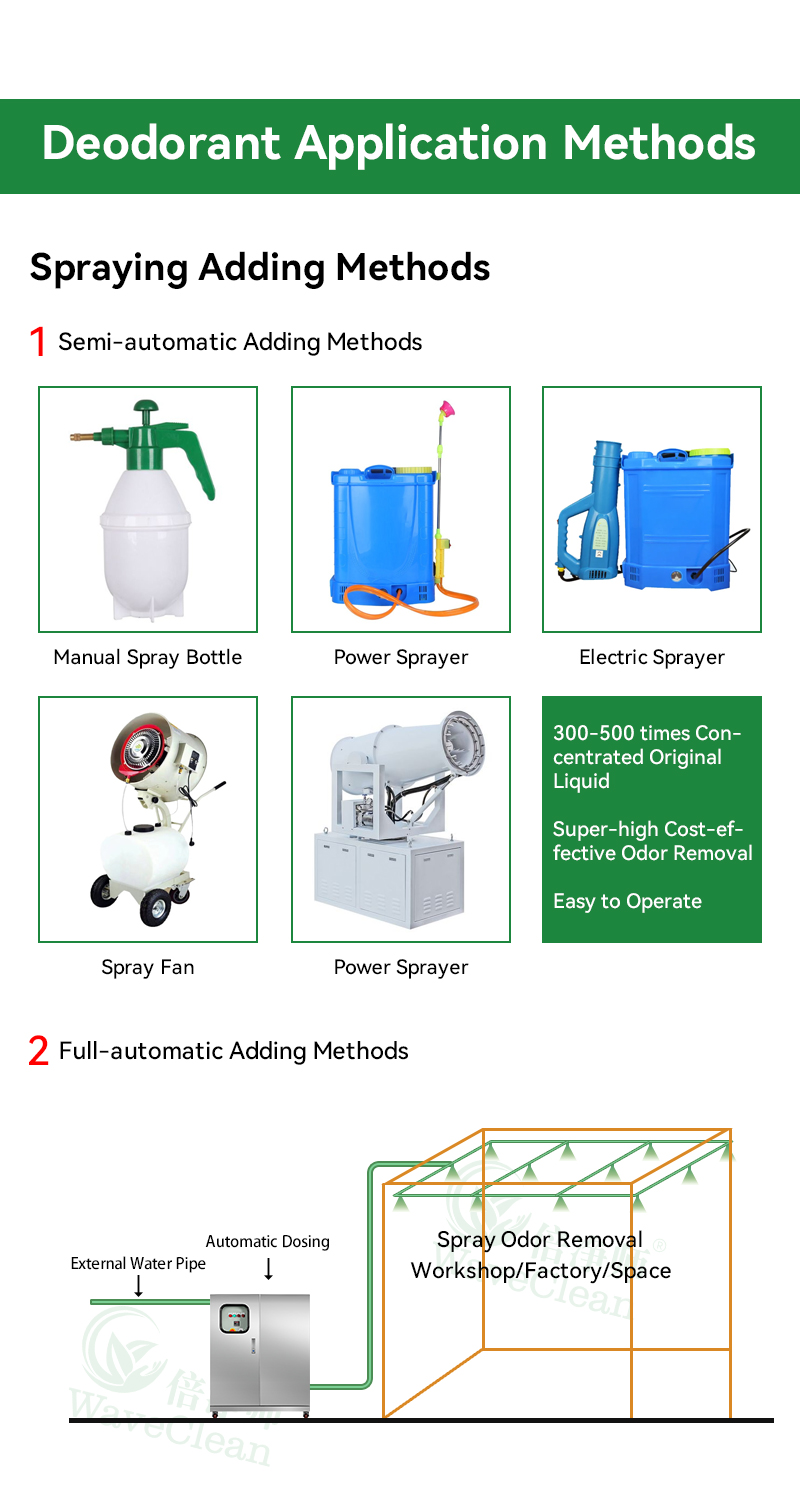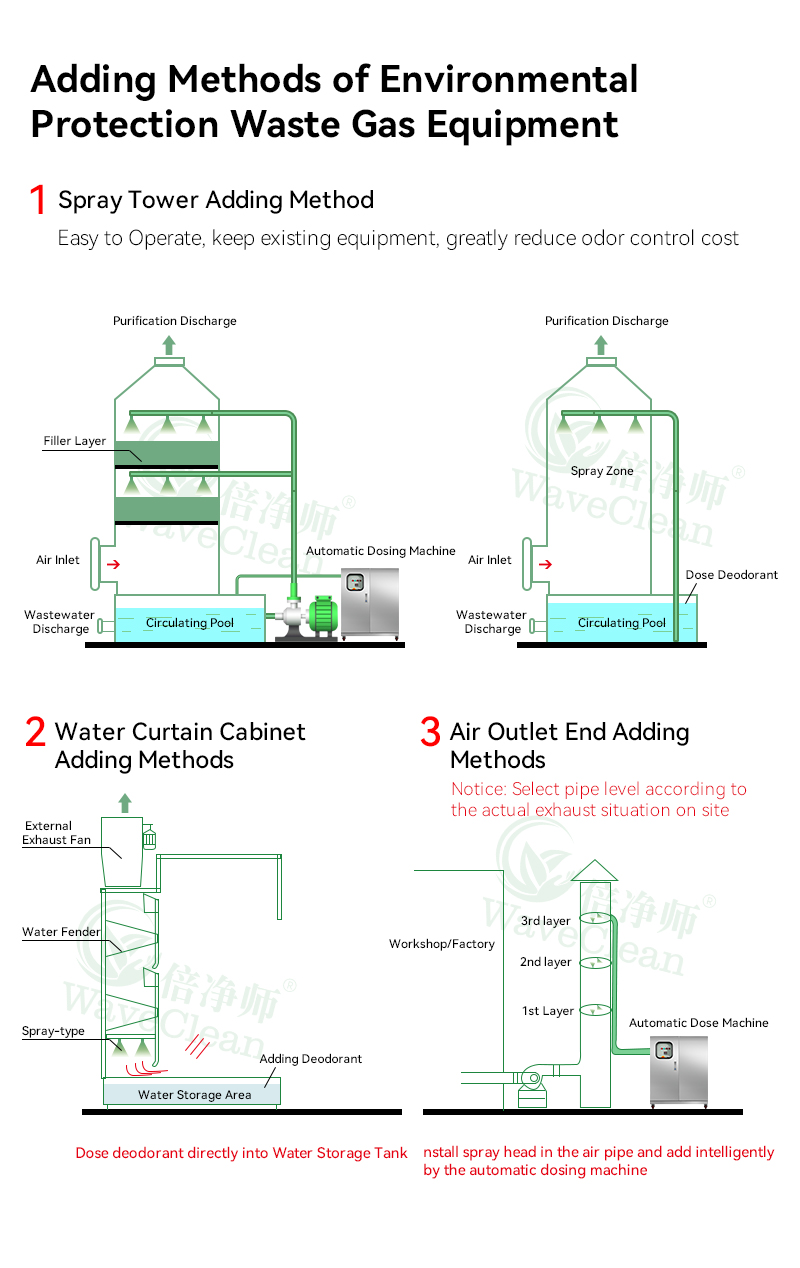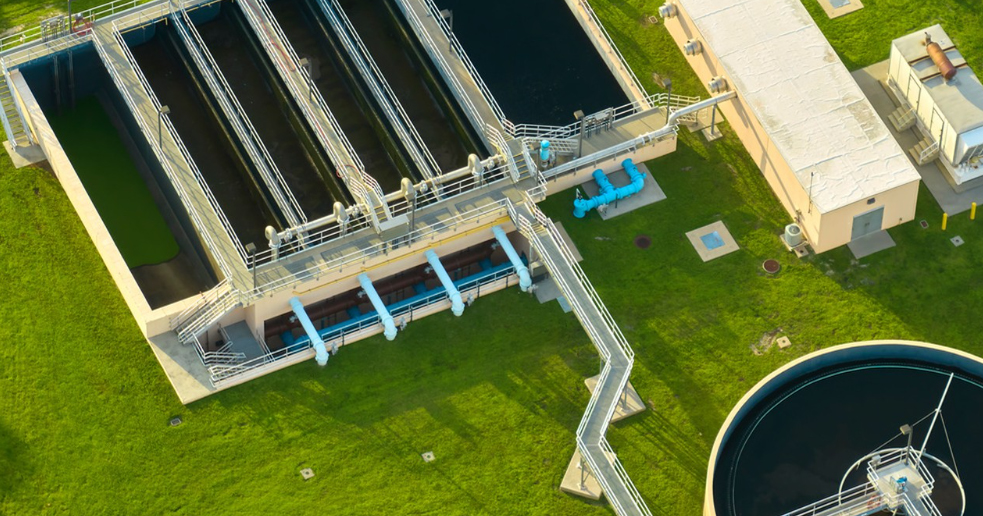Odorous Organic Gas Emissions in Chemical and Pharmaceutical Plants
During production processes, chemical and pharmaceutical plants often emit odorous organic gases and chemical odors, including compounds such as benzene, aldehydes, and sulfur-containing gases. Traditional physical adsorption or water scrubbing methods often fail to fully eliminate these odor molecules, making professional deodorization essential.
✅ Biological Methods (Biofilters, Scrubbers):
Utilize microorganisms to degrade organic gases, suitable for lower concentrations and continuous emissions.
✅ Chemical Absorption:
Use acids, bases, or oxidants to neutralize odor molecules, effective for high-concentration or peak emissions.
✅ Advanced Oxidation Technologies (Plasma, Photocatalysis):
Suitable for integrated treatment of various odor gases.
WaveClean Deodorizer
💧 Specifically developed for chemical and pharmaceutical exhaust gases, containing plant extracts, decomposing enzymes, and neutralizing agents that quickly disrupt odor molecules.
💧 Can be directly sprayed at exhaust outlets, ducts, or tail gas scrubbers, rapidly reacting with odors.
💧 Highly effective against ammonia, sulfides, VOCs, and other pollutants. Safe for equipment, non-corrosive.
Usage Method
Dilute the deodorizing agent at a ratio of 1:100 to 1:500. Apply via spraying or high-pressure mist systems to form an even fog, continuously purifying the exhaust gas with stable, long-lasting effects.

Need Expert Support?
No matter your industry or odor challenge, our experienced engineers are ready to provide customized odor control solutions.
Contact us today for tailored assistance.







